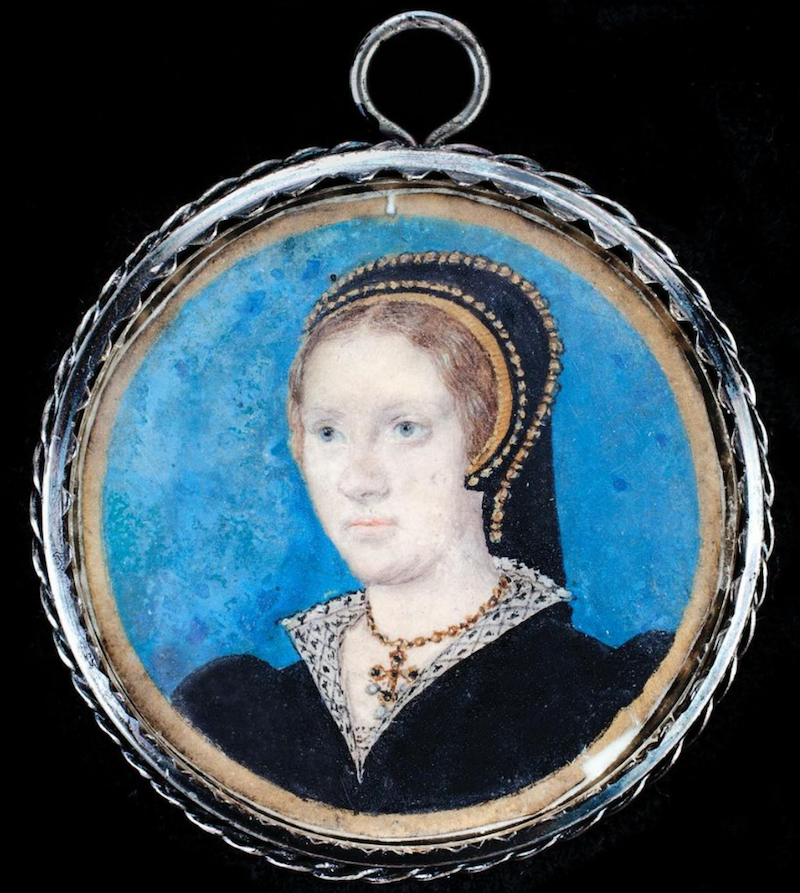Susanna Horenbout (later anglicized to Susannah Hornebolt) was the daughter of Flemish artist, Gerard Hornebolt, and sister of Lucas Horenbout (Court Miniaturist of King Henry VIII of England from September 1525 to his death in 1544). She learned to paint with her father. She gained recognition in Antwerp in 1521 when Albrecht Dürer bought her illumination, The Savior. Dürer marveled “that a woman should be able to do such work.”And she was only 18 years old at the time!
The Horenbout family came to England in the early to mid 1520s (most likely 1522). Previously, Gerard Horenbout had worked for Archduchess Margaret of Austria (Regent of the Netherlands). The family then relocated to England to work at Henry VIII's court.
She worked as a manuscript illuminator and painter of miniatures. Susanna also served as a gentlewoman in the households of at least four of Henry VIII’s six wives: Jane Seymour, Anne of Cleves, Katherine Howard, and Katherine Parr.
Around 1525-1526, Susanna married John Parker, a courtier in the court of Henry VIII, who was Keeper of the Palace of Westminster and Yeoman of the King's Crossbows, and later Yeoman of the King's Robes. Parker died in September 1537
On September 22, 1539 at St. Margaret's Church in Westminster, she married John Gilman, who was to become, Serjeant of the King's Woodyard.
In 1540, Susanna became a member of Queen Anne of Cleves's privy chamber and was responsible for four servants. The queen considered her the "first of her gentlewomen."
Also around 1540, Susanna and her husband had their first child, a son named Henry Gilman (1540-1593). King Henry VIII was their son's godfather.
Susanna and Gilman had two sons and at least two daughters during the course of their marriage.
Her time of death is not completely known, except that she was deceased by 1554 when Gilman married for a third time.
In 1567, Italian writer Lodovico Guicciardini praised Susanna as “an excellent painter, especially in making of very small works [miniatures] beyond all belief; and most excellent in illuminating [manuscripts] so that the great King Henry VIII brought her to England with great gifts and provisions.”
She was also mentioned by Giorgio Vasari in his masterwork, Lives of the Artists. He included her among a small list of women "who have been excellent miniaturists."

Susanna Horenbout, Mary Tudor, c. 1546, Compton Verney Gallery, UK
Notice the blackwork embroidery on the inside of the partlet that Mary Tudor is wearing in the miniature portrait?
Works Cited:
- "Susanna Horenbout: Forgotten Female Artist at the Tudor Court." Daily Art Magazine. https://www.dailyartmagazine.com/susanna-horenbout/.
- "The Lost Works of Susanna Horenbout." Art Her Story. https://artherstory.net/the-lost-works-of-susanna-horenbout-female-artist-at-the-tudor-court/.
- "Susannah Hornebolt." https://en.wikipedia.org/wiki/Susannah_Hornebolt.
- "Susannah Hornebolt, Artist at the Tudor Court." https://www.monstrousregimentofwomen.com/2021/01/susannah-hornebolt-artist-at-tudor-court.html.
No comments:
Post a Comment